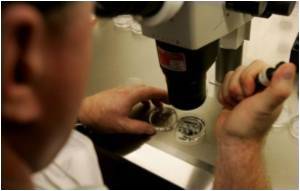
"For the first time, UVA rays have been shown to cause significant damage to the DNA of human melanocyte skin cells," says Moon-shong Tang, PhD, professor of environmental medicine, pathology and medicine at NYU School of Medicine. "And because melanocytes have a reduced capacity to repair DNA damage from UVA radiation, they mutate more frequently, potentially leading to the development of melanoma."
In this study, researchers exposed lightly and darkly pigmented human melanocytes to UVA radiation and assessed DNA damage and the capacity of these cells to repair damaged DNA. DNA damage was detected in all melanocyte cells and these cells were unable to repair the damage. Normal skin cells were also exposed to UVA light but no damage to their DNA was observed.
"Identifying the underlying causes of melanoma allows researchers to develop new ways to assess a person's risk of melanoma, prevent the disease and aid in the design of more effective treatments," said Dr. Tang, who is also a member of the NYU Cancer Institute.
Sunlight in the form of UVA radiation causes oxygen in melanocytes to damage DNA. Thus, oxidative DNA damage adversely affects transcription and DNA replication in melanocytes. The authors concluded that UVA-induced oxidative DNA damage in melanocytes and the inherently reduced repair capacity in these cells are the two key factors that contribute to melanoma on the skin.
The authors also discovered the underlying mechanism to explain why melanoma can also develop in areas never exposed to sunlight: Because melanocytes generally have a limited capacity to repair any DNA damage, they have a higher mutation frequency rate and are more susceptible to the development of melanoma—even without the effects of the sun.
Advertisement
Advertisement














